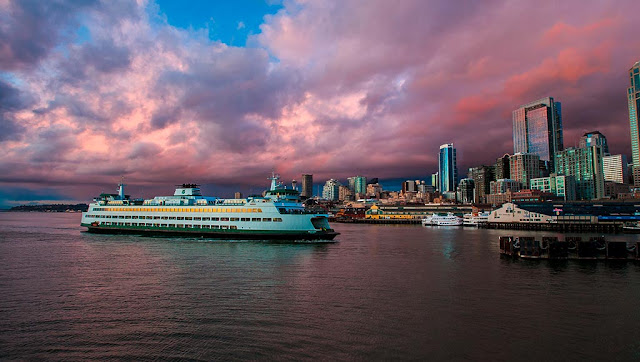The Strategic Vitality of State Ferries in Western Washington
"the Washington State Ferry system is not merely a transportation option; it is the lifeblood of Western Washington."
Connecting a Web of Communities: Western Washington's unique geography, characterized by numerous islands, peninsulas, and fjords, creates a transportation challenge unlike any other. The WSF system expertly navigates this intricate web of waterways, knitting together seemingly isolated communities into an integrated network. For residents and businesses, this means access to essential services, jobs, education, and healthcare. The ferries are lifelines for many, breaking down geographical barriers and fostering a sense of unity among diverse locales.
Economic Engine: Beyond mere connectivity, the WSF system is a key driver of the regional economy. Western Washington is home to numerous industries, including tourism, agriculture, and technology. The ferries facilitate the movement of goods and people, enabling these industries to thrive.
Tourism: From the San Juan Islands to the Olympic Peninsula, tourists flock to Western Washington to explore its natural wonders. The ferries offer a scenic and convenient means of access, attracting visitors and stimulating local economies.
Agriculture: Ferry routes serve agricultural communities on islands like Whidbey and Vashon, allowing farmers to transport their produce to urban markets efficiently. This direct link sustains local agriculture and ensures fresh, regionally grown produce for consumers.
Tech Hub Access: The Puget Sound region is a technology hub, home to giants like Microsoft and Amazon. WSF routes enable employees to live in picturesque waterfront communities while working in the urban centers, easing traffic congestion and reducing environmental impact.
Environmental Stewardship: The WSF system also plays a crucial role in environmental stewardship. Ferries operate using cleaner fuels and emit fewer greenhouse gases per passenger-mile than many other modes of transportation. By providing an alternative to long commutes by car, they help reduce the region's carbon footprint.
Emergency Resilience: In times of crisis, the WSF system proves its strategic value even further. When natural disasters like earthquakes or wildfires disrupt roadways or bridges, ferries become vital evacuation routes. Their adaptability and mobility make them an essential component of Western Washington's emergency response infrastructure.
Challenges and Future Investments: Despite its pivotal role, the WSF system faces challenges. Aging vessels and infrastructure need continuous maintenance and upgrades. Funding and investment in modernizing the fleet and improving terminals are essential to keep the system efficient and reliable. Furthermore, the WSF system must adapt to the changing climate, as rising sea levels and more severe weather events threaten its operations.
In conclusion, the Washington State Ferry system is not merely a transportation option; it is the lifeblood of Western Washington. Its strategic vitality goes beyond connecting communities; it fuels economic growth, enhances environmental sustainability, and ensures regional resilience in times of crisis. Recognizing its importance and investing in its future is key to maintaining the region's well-being and prosperity.






No comments